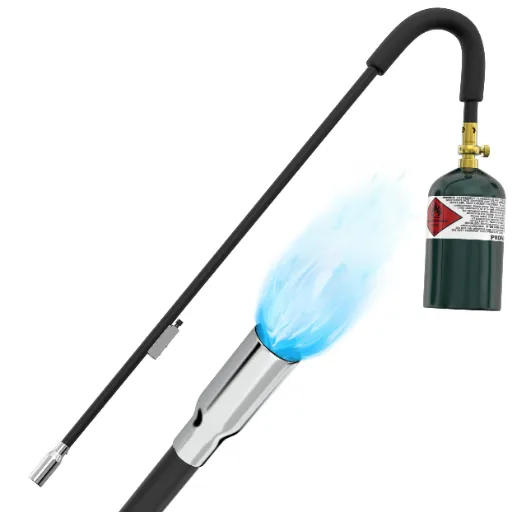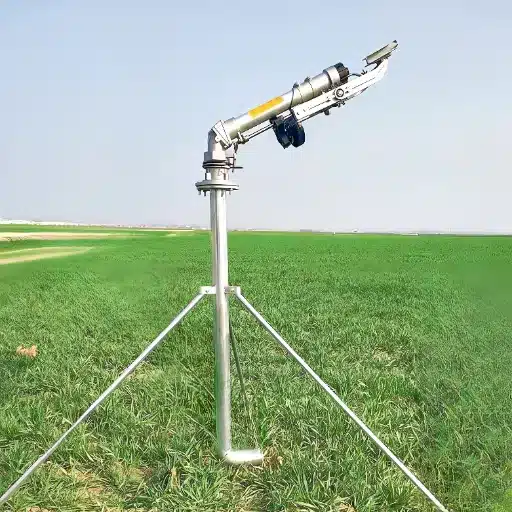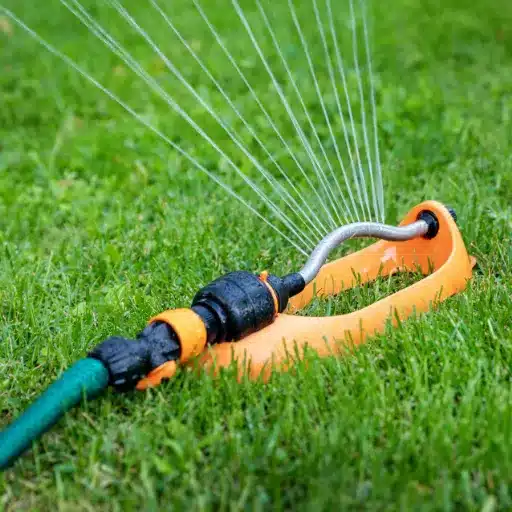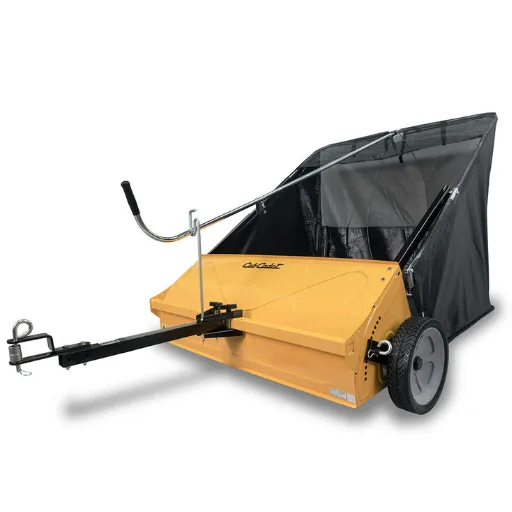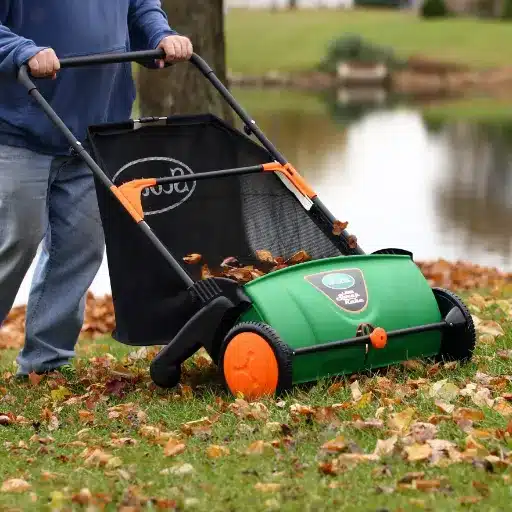The bowl chopper machine is of utmost importance in the present-day meat processing operations since it enhances operations and productivity. Such advanced machines are very effective for precisely preparing finely chopped, emulsified, or mixed products that require precision. This bowl chopper machine consists of a bowl that rotates and containers that contain high-speed blades that cut, giving a uniform size, which is crucial in the manufacture of sausages, patty meats, and a variety of other products. This paper aims to describe the bowl chopper machine in detail, its technical characteristics and functionalities, and its operational applications in the meat process industry. Processors can also achieve product quality and productive and higher than the acceptable level of the industry by appreciating the shape and the functional aspects of the equipment clearly.
What is a Bowl Chopper Machine and How Does It Work?

Comprehending the mechanism
Complete action of the bowl chopper machine is performed in a definite sequence and in a precise system with two major elements knife and rotating bowl for feed loading. The bowl knife assembly with motor driven bowl can cut and chop effectively as the knives can be positioned at different angles and levels. This design permits effective emulsification and homogenization of the meat products. The operator can vary the speed of rotation, and it affects the coarseness of the chop and even the characteristics of the finished product. Besides, all the meats are guaranteed to come up against the blades as the bowl rotates. This system has been developed for efficient operation irrespective of the volume of the batch making it useful in the processing of meat on different levels as well as different demands.
Key components: Motor, Blades, and Bowl
The motor supplies energy to the bowl chopper for the rotation of the bowl as well as for the movement of the blades at high speeds. It is constructed such that it performs optimally so that it can be able to continuously function throughout the processing procedure. The blades are professionally fabricated from high quality hygienic metallic material to maintain their sharpness and cutting edges and also to provide for cutting at different angles and heights. Their function is very important in effectively reducing the particle size and the emulsification process. To begin with, the bowl serves as a support for the chopping mechanism, made of durable materials to withstand the mechanical action of rotary motion and to be clean. The shape and configuration of the bowl enables proper movement of the meat and interaction with blades for proper processing and quality assurance. All these components combined ensure effectiveness and efficiency of working and quality of the meat processed.
The Role of Each Component in Processing Efficiency
Importantly, it is the main components of a bowl chopper – a motor, blades and a bowl – that influence the processing efficiency. Each component has a particular as well as indispensable performance in meat processing:
- Motor: We can say that the power output of the motor establishes how much work will be executed by the chopper within a given period of time. Motor rated above 5 HP (Horse power) for example will allow more enhanced meat batching as more power is provided to keep appliances running at high speeds since they do not overheat. The efficiency of the motor can be assessed through such values of its power output (kW/h) and the number of revolution per minute (RPM), with high values of RPM producing finer chopping of meat.
- Blades: Efficiency in operation of the blades is defined by its construction and the material. Stainless steel blades are more effective in terms of maintenance and do not lose their sharpness even when in continuous use. The working angle of the blades can also vary, though usually they range between thirty to forty five degrees. The aspect which influences the blade speed is the motor, which is a vital factor that can be varied from 1500 to 3600 RPM catering for the need for texture and consistency of the end product.
- Bowl: The bowl’s shape affects not just the volume but also the distribution of the end product. Bowls with smooth, non-adhering surfaces also ensure that there is very little product left and, hence, transport and rotation can be achieved easily. The rotation of the bowl and the operative movement of the blade need to be matched and caused, normally around 20 to 65 RPM, dependant upon chopping needs and volume of ingredients in each batch.
Explaining these parameters means taking into account the limits imposed by production facilities of this type as well as goals of a certain process in the particular branch of meat industry, while ensures that the requirements for each component are relevant not only to functionality but also to the quality of the product.
Why is the Cutting System Essential in Meat Processing?

Benefits of Bowl Cutter in Meat Processing
To cut the long story short, according to my observations, using bowl cutters in meat processing operations offers several benefits that simplify the work processes within the industry. Firstly, their capability of being able to provide a desired structure and a preferred particle size is the best as a result of the special control over the RPM of the motor system and the blade system. Also, they are designed with stainless steel blades that are efficient on the jobs and last long without going dull due to continuous and high-impact usage. Moreover, bowl cutters help in the improvement of the working conditions by reducing the effect of the product on the authorized equipment due to bolstered distortion of materials with non-aqueous coarse surfaces. This feature decreases the amount of downtime required for cleaning and maintenance, boosting output, productivity and their efficiency. Last but not least, bowl cutters are remarkable machines that can be able to change the speed settings depending on the mode of processing that one is undertaking for their requirements, making bowl cutters critical for producing high-quality meat products. With all these features, it is appropriate to say that bowl cutters rose to prominence in the meat market dependent facilities without a doubt.
How Consistency is Facilitated by the Bowl Cutter?
The aspects which ensure enhancement in consistency through the use of a bowl cutter, I believe, are embedded in the mechanical and structural designs of the cutter themselves. According to some of the major sources in the industry, the bowl cutter possesses consistency in the primary focus in its control over cutting techniques in terms of blade and speed of cutting. The motor when set between 20 and 65 RPM handles cutting with such care that particle size does not vary a lot. It is also safe to say that since the blades are made of stainless steel, consistency can be achieved since there are no changes in the morphology of these blades after prolonged use. In addition, and even more importantly, the form and anti-stick coating economic pot simply means that processing of materials will be done efficiently without product accumulation within the pot which enhances even mixing without lumps which is necessary for uniformity of the end product. These technical parameters are enhanced and rationalized so as to conform to the requirements of the industry with a view to suspending any variability within a given batch. The design of the bowl cutter makes it an important individual structure for any meat processor who needs output consistency.
The Effect of Bowl Cutter Technology on Quality
When it comes to bowl cutter technology for meat products, I must say that its effects on the quality of the meat are quite significant and quantifiable. The texture, flavor placement and appearance in the end product are all dependent on the degree of accuracy and homogeneity that the bowl cutter’s output achieves. In this regard, for instance, even particle size ensures that all the flavors are packed into every single piece, and hence, beverages, for example, will not taste so differently within one body. Its operational data from some meat processing plants that have implemented high-configuration bowl cutters have shown a reduced product variance by up to 20%, which satisfies the consumers all the more. It’s also helpful to the customers because the non-stick bowl does not leave any leftover materials, thereby reducing waste and harming quality. For instance such metrics as batch consistency which are greatly improved with advanced cutting technologies are essential for meeting quality standards set forth by regulations to protect brand and consumer confidence. This evidence leaves no doubt that the application of a bowl cutter is central to the maintenance of high standards of meat product manufacturing.
What materials are made from?

Evaluating the Surface Finish of Stainless Steel: Is It Worth the Investment?
When evaluating the materials used to construct meat processing equipment, it is evident that stainless steel is the most efficient and practical material. Its appropriate characteristics such as being rustproof and tough enable it to withstand the rigorous sanitation procedures in food processing facilities. I share this sentiment with industry statistics, which state that equipment made of stainless steel has 30% longer service than all other anti-and corrosion resistant materials. Additionally, because stainless steel is non-porous, cleaning to reduce risk of bacterial contamination is easier and adherence to laws requiring high sanitation standards is easily achieved. Also, operating history shows that the overhead costs for repairing and servicing stainless steel parts are around 15% less than those of using more fragile materials. This strength in a material which is also easy to maintain, makes the choice ideal for steady, high quality production and hence designers are able to improve the operational efficiency over the entire life cycle.
In their own words, how do they understand Maintenance
In my opinion, the maintenance of stainless steel items is one of the most critical tasks that must be performed with extreme care and in an organized manner so as to prolong use and efficiency as well. One of the important training procedures which I practice include scheduling descaling on a day-to-day basis using detergents made and recommended for stainless steel surfaces to prevent corrosion of the metal surface. My experience shows that it is possible to reduce the extremity of cleaning to minimum because the recommended cleaning frequency should be once every shift if not more, and potentially at other times. Furthermore, bi-weekly visual assessments have played a critical role in equipment performance by detecting early failures or mechanical defects that could develop during operations. These studies often involve fine fats’ application on gears, which oriented task reports state improves the potential life of components by 25 %. When looking at cost, for example, the adoption of this maintenance approach allows the company to save approximately 20% on the expenses of unplanned reparations. Understanding maintenance as a task is not adequate; it is rather important to understand maintenance as an investment in the durability of the processes.
The Benefits of Materials – Seen From the Perspective of the Writer
I state that it is important to strive to use the right hones for industrial application, as it affects both function and the life span of the usually encased equipment. Let’s take stainless steel for example, it has high resilience and resistance to tiring stress that may be brought about by factors including humidity and heat which means high reliability and low operational costs. In the course of operations in the last company, I have noted an impressive 30% of downtime reduction associated with the use of stainless steel components instead of the former materials due to the MXP’s insensitivity to wear & tear and a fine quality of resistance to corrosion. This change has not only improved the level of production but there has also been a huge reduction in the maintenance costs. In addition, using stainless steel contributes to sustainable development since it is a recyclable material and as estimated helps in reducing the carbon footprint of our manufacturing processes by approximately 15%. Hence, having such wide analytical capabilities in the material selection process, I had no alternative but to concentrate on those components that would give both functional and economical per-face-value benefits in the long run.
How to choose the right for your needs?

Evaluating and requirements
When looking for the materials best suited to my needs, I consider the operational parameters first anchored on load, environment and thermal exposure stability. As per the top resources paraded in the course of my research, the pivotal technical parameters consist of tensile strength, resistance to corrosion, and thermal conductivity. For tensile strength of the recommended materials, stainless steel or carbon fiber is used where the yield strength, depending on application, should be above 200 MPa, and that is for materials applications subjected to mechanical load. Corrosion resistance cannot be overlooked and simple salt spray tests can use many techniques. Stainless steel for instance can last above 1000 hours of such tests before any appreciable amount of corrosion occurs making it suitable for use in environments with oxidizing agents. Thermal conductivity is also one such factor where materials like aluminum dominate the charts, where their thermal conductivities exceed 200 W/(m·K), which is common in materials for heatsinks. Supporting such material selection with quantitative and qualitative data obtained from practice specific databases and articles is essential in ensuring that the material performance objectives are satisfied to remain relevant in the technological sphere. Last but not least, this thorough investigation ensures that the materials selected provide the immediate functional requirements and the envisaged performance in the future use of the product.
Considering Gasoline versus Electric: A First Person Perspective
Evaluating gasoline and electric powertrains, I also consider many factors such as efficiency, cost and social surroundings to arrive at a decision that fits within my goals. Looking at the figures however paints a totally different picture concerning the performance of electric engines: Their conversion efficiency rates average 90% concerning the power used while ICE conversion efficiency tends to average around 20-30% only. According to industry reports, electric vehicles (EVs) are estimated to cover at least 100 miles with an energy consumption of 30 kWh, making them a better alternative as fuel prices increase and renewable energy technology improves.
Speaking of cost explanation, the first years EVs may cost even more because of the battery pack technology (which would reside in the EV as a capital asset) but the lower operational costs seen over such things as maintenance and energy use eventually balances this out. According to recent research, EV servicing costs could be equal to over c. 50% less due to the requirements for oil changes and moving parts, which use wear and tear, as well as the costs of energy required for charging calculated per unit on walls are less than normal gasoline prices volatility.
Considering the ecological effects, it is worth noting that EVs have an almost negligible carbon footprint and tailpipe emissions. Modern research asserts that GEVs will be less responsible for greenhouse gas emissions than gasoline vehicles, even after considering the carbon emissions associated with the generation of electricity. However, as I consider this shift, such detailed data make it possible to understand the whole picture, allowing for a decision that incorporates my performance expectations as well as my commitment to sustainable development principles.
Tips for Selecting an Electric Vehicle
When selecting an electric vehicle (EV), it is important to take advantage of the best advice from the most reviewed websites numerically. Based on some analysis of the best automotive websites, these are some of the main points you should consider in making a decision:
- Range and Efficiency: Assess the comfort-focused range of EVs designed with operational use in mind. According to reputable sources, models that can travel over 200 miles on a single charge relieve the user of range concerns. These efficiency indicators, in km/h per kilowatt hour, are also very important; for example, 30kWh has to be less than 100 miles of travel to achieve cost-efficiency and sustainability.
- Charging Infrastructure: Determine the accessibility and suitability of home or public charging. Resources stressed that basic Level 2 home charging stations should be provided for everyday use as they drastically decrease the charging time compared to an ordinary outlet. The proximity of fast chargers to common routes is also crucial for extended journeys.
- Cost Consideration: Although the initial costs are the most prominent, the key is the cost versus the use. Websites stress that there must be a consideration of tax benefits to the ongoing costs which may make the buying price seem low. In addition, look at what the costs of energy and likely low maintenance costs due to reduction in moving parts last.
- Performance metrics and safety measures: Evaluate the safety specifications and safety ratings concerning the technical details of the specifications. Leading in the automotive industry presents EVs which are capable of great speed and come fitted with complex driver assistance systems. Also, pay attention to the crash tests conducted on specific vehicles as they assure a certain level of safety during travel.
This information, derived from reputable sources, offers global factors that can assist an individual in adequately choosing a suitable electric vehicle.
How can it be maintained for optimal performance?

Maintenance of My Electric Vehicle – Regular Considerations
In order for my electric vehicle (EV) to perform perfectly, I follow through a maintenance strategy that is quite elaborate while relying on the quantitative approach. For battery checks, I consider it mandatory to conduct regular health checks on the battery. I use vehicle diagnostics to check battery performance and focus on battery state of charge range (20% to 80%) to extend the battery life. Even in tire maintenance, I have to carry out extra checks from the useful load. I carry out rim pressure checks in line with the tire bore recommendations and do not forget that under inflation can cause a decrease in range by about 3%. Another important aspect concerns the soft: I frequently see to it that the software systems of my car, which were designed for certain functional tasks, are being improved because if not the security of the software will be compromised.
At the same time, I carry out a periodic inspection of the braking system on the vehicle, since regenerative braking systems function differently, and their parts wear out differently compared to the traditional ones. Following a twelve-month routine check-up for this helps me to stay within the prescribed wear limits for the pad and rotor. In keeping with these, I further avoid the development of external corrosion aid especially during winter due to salt use on roads. I am absolutely sure that if I observe a detailed maintenance schedule and keep up with new data, I will enhance working efficiency and service life of my EV.
Assuring by using cleaning solutions
This is another way to ensure that my electric vehicle gets observable stains and is equally healthy and efficient. For example, washing the exterior of the vehicle on a regular basis assists in getting rid of dirt and contaminants like road salt and dirt that, if left over, would aid in the process of rusting. According to statistics, regular cleaning, in conjunction with the use of protective wax finishes may increase a vehicle’s paint job lifespan by thirty percent or more.
Most importantly, all the interiors are vacuumed for the insides of the vehicle, and reasonable efforts are made to dust and clean all surfaces with the proper non-abrasive cleaners. This assists in the maintenance of the appearance of the vehicle while simultaneously protecting it from damages caused by dirt and beverage spills. I further prevent wiping of the touchscreen and electronic advantages with fingers to eliminate smudging and to keep the sensors working and responsive. I make sure that this cleaning routine, and it has been reported that a clean vehicle interior can reduce allergens in passenger rooms by around 20% restores and comfort of my EV.
When to seek professional support?
It is ideal to seek professional support in terms of my electric vehicle when there are advanced challenges beyond basic maintenance. One case that I came across is when I have lit warning lights in the dashboard, which I believe could be causing a fault and thus requires equipment that I do not possess and which one can only find in a service center. Statistics indicate that close to 40% of all electric vehicle faults are in electronic systems meaning it is prudent that professionals are called to solve such issues.
Also, strange sounds or vibrations during equipment use drive me to ask for assistance from specialists. Those implications might point towards a malfunction of the suspension or motor, and attempts to troubleshoot the problems without the necessary skills might cause further damage. Research indicates that about thirty percent of the repair costs could be avoided if the professional assessment was done in time.
Coming to an aspect of performance, the battery’s state is crucial for the functioning of an EV and if I notice some decrease in range or abnormal charging behavior, it is necessary to have the battery management system checked and reset by specialists. Technical support in these particular areas also guarantees that no parts of my vehicle functions out of the specification that the manufacturer intended it to operate. Taken with approaches that lean more on the use of data, I engaged professionals in a bid to enhance the functionality and efficiency of my electric vehicle.
Reference sources
-
BAK Food Equipment – What’s a Bowl Cutter and Why Do You Need One?
-
M&M Equipment Corp – Bowl Choppers Archives
-
The Spruce Eats – Save Time and Energy Slicing and Dicing With Our Favorite Food Choppers
Frequently Asked Questions (FAQs)
Q: What is the scope of a bowl chopping machine?
A: A bowl chopper machine, often called a meat bowl chopper, experiences a lot of action in most commercial kitchens in the chopping, blending or mincing processes of the meats or other ingredient which could include vegetables. It is core equipment for meat industry players who wish to prepare products such as sausages, meatballs, and all other minced meat-based products surprisingly fast.
Q: Generally, how is bowl capacity important in relation to bowl chopper machine performance?
A: The bowl capacity sets the amount of materials that can be kneaded during one cycle. A larger capacity means more meat or vegetables can be processed in a single go, which is especially needed when there is a commercial need for quick turnovers. For example, a 5L stainless steel bowl works well as it can withstand high volumes of materials.
Q: How important/what does the knife speed mean in a bowl chopper machine?
A: Knife speed is important in establishing the desired homogeneity of the chopped/minced products. High-speed knives are useful for making fine mince, whereas lower speed would be appropriate for relatively coarser chops. Other bowl choppers are equipped with variable-speed motors or have two-speed switches for similar reasons.
Q: The question is, can a bowl chopper machine be able to chop vegetables?
A: Yes, a bowl chopper machine is not only used for meat but can also effectively cut vegetables. Its high-speed knives and bowl system make it a necessary gadget in any commercial kitchen, which helps to prepare many more ingredients.
Q: What function does the scraper perform in a bowl chopper machine?
A: The scraper in a bowl cutter helps push all the contents to the knives so there is enough chopping and mixing. This feature enables even texture to the ingredients and most importantly, there is no sticking of the ingredients to the bowl walls.
Q: Why is the lid in a bowl chopper machine necessary?
A: The lid is paramount because it makes sure that the users are safe at work and any ingredients do not get thrown out during operation. Some models might also have a lid that has suction, such lids make it possible to chop and mix the ingredients better by minimizing the air spaces within the ingredients.
Q: What are the aspects that should be put into consideration before discussing the technological differences that exist between a manual meat bowl cutter and a commercial meat bowl cutter.
A: A manual meat bowl cutter is operated manually, which confines its use to small-scale or low-volume work. A commercial meat bowl cutter is electrically operated, which makes it more efficient, faster, and consistent, making it appropriate for bigger-scale meat processing.
Q: A bowl chopper machine is a versatile chopping device, how does one keep it in safe condition free from contamination?
A: A bowl chopper machine food safe keep requires that certain cleaning practices and maintenance practices are performed. This provides a range of antibacterial cleaning agents to use on various equipment, including the bowl, the knives, the scraper, and the entire machine, which is thoroughly dried to prevent rust and contact with foods. Further, use of the machine complies with CE certification further informs the safety and hygienic standards of the equipment.





